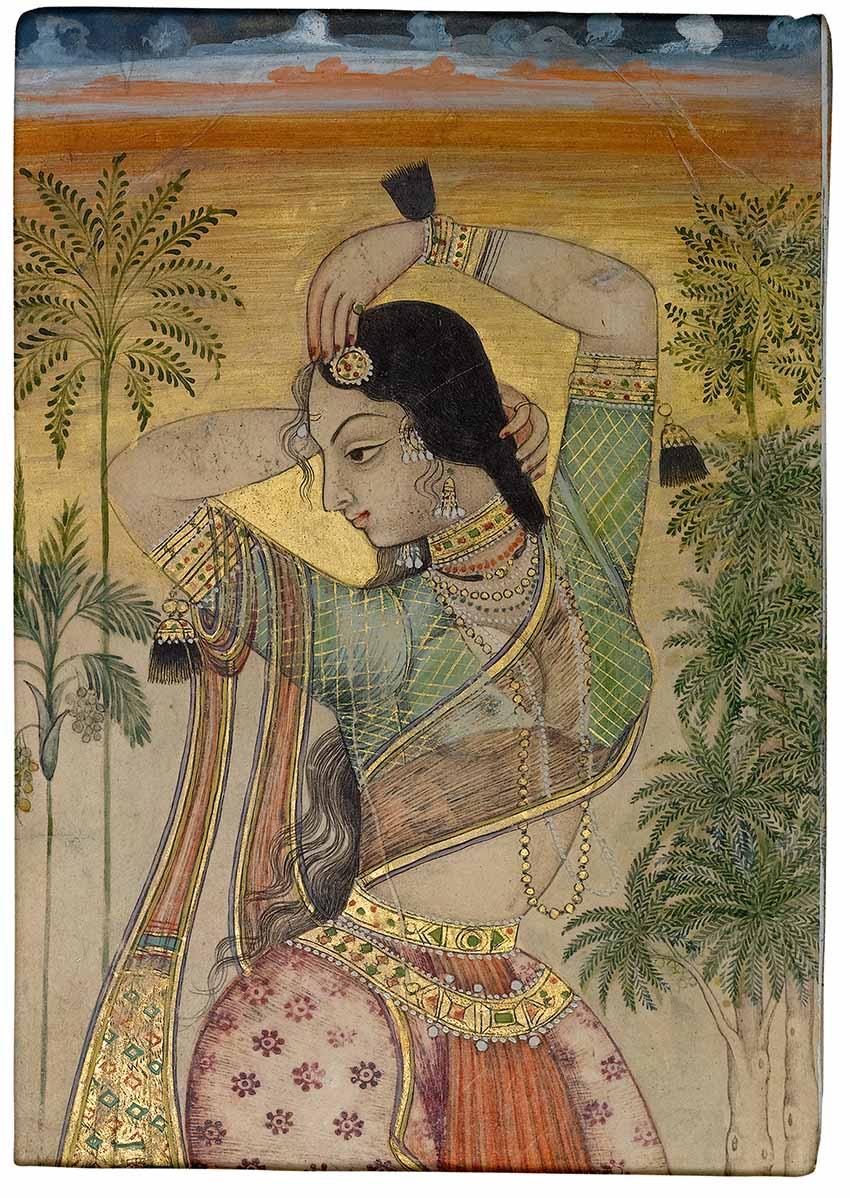DECCAN ART IS having a breakout year. Although it opened on 20 April at the Met, curator Dr Navina Najat Haider has been compiling, researching, and anticipating Sultans of Deccan India, 1500-1700: Opulence and Fantasy for more than a decade. Augmented by the loan of many artworks from the National Museum of New Delhi, the rediscovery of Deccan in their collection also led to Delhi’s first-ever local showcase in January this year (see Asian Art Newspaper March 2015).
Home to Highly Cultured Muslim Kingdoms
The Deccan plateau of south-central India was home to a succession of highly cultured Muslim kingdoms with a rich artistic heritage. Under their patronage in the 16th and 17th centuries, foreign influences – notably from Iran, Turkey, eastern Africa, and Europe – combined with ancient and prevailing Indian traditions to create a distinctive Indo-Islamic art and culture.
The population of the region by the 16th century included immigrants from Central Asia and Iran, African military slaves, native-born Muslim nobles, and European missionaries, merchants, and mercenaries. As a result, it boasted one of the most cosmopolitan societies of the early modern world. To provide a glimpse into this dynamic, yet little-known society, the exhibition focuses chiefly on the courtly art of the kingdoms of Bijapur, Ahmadnagar, Bidar, and Golconda.
Dynamic Centres of Royal Patronage
These dynamic centres of royal patronage drew some of the greatest artists, writers, poets, and musicians of the period. As the title indicates, the examination of the Deccan school focuses on the opulent treasures of the sultans’ five royal courts in the 17th century. The well-chosen linguistic breakdown of opulence versus fantasy manifests in a showcase of luxurious jewels and portraits alongside zoomorphic objects of ceremony and war.
The exhibition features more than 200 textiles, paintings, jewellery and metalwork that exemplify Deccan influence and development. The previously lesser-known genre of art is illuminated by works sourced from widely dispersed international royal and private collections including the Ashmolean Museum at Oxford, Victoria & Albert Museum, as well as from dealers Prahlad Bubbar and Francesca Galloway.
While the Deccan Sultanate has played a subservient historical role to the Mughal rule over the 17th-18th centuries, the intersection of eastern traders resulted in a rare richness and hybrid of variant arts and cultures.
The Golden Age of Bijapur
The golden age of Bijapur under the rule of Sultan Ibrahim Adil Shah II (1580-1627) defines the spirit of Deccani art. Masterpieces in painting by the leading court artist Farrukh Husain demonstrates the refined and lyrical style that influenced much of Deccani art. Ahmadnagar’s African nobility included the legendary Abyssinian Malik Ambar (1548-1628), whose portraits are included among other rare surviving works. Numerous examples of the celebrated bidri metalwork tradition from the kingdom of Bidar are also on show.
The Agra Diamond
Luxury is in evidence from the start – the Agra diamond is at the entrance of the exhibition, on loan from the Qatar-based Al-Thani family collection. Large, clear, and sparkling, it provides a highly relatable access-point for the viewer. A full collection of jewels from this collection was shown earlier in 2015 at the museum. The opulence of carefully selected Deccan pieces aptly illustrates the vast wealth and abundance of luxury items from this region.
Art from the 17th court of Bijapur is particularly diverse, ranging from watercolour illustrations to royal portraiture, as well as a fascinating mid to late 16th-century daggers. These daggers differ from the oft-seen Mughal khanjar styles that have carried their influence through to the Emirati courts today. In this case, the trademark zoomorphic fuse various Asian aesthetics in elaborately crafted copper inlay.
One late 16th-century dagger, attributed to either Bijapur or Golconda, is gilded and inlaid with gem stones, featuring a dragon, a lion, a deer, and a bird all entwined in attack, with the mythical animals on the hilt adding to the symbolism of strength in battle. Another dagger has two yalis, mythological lion-elephant hybrids, framing the hilt in bronze.
Deccan Portrait Paintings
Portraits of the elite in Sultans of the Deccan personify the use of these luxury items. An intricate miniature watercolour painting of Sultan Ali ‘Adil Shah II Shooting an Arrow at a Tiger from Bijapur shows a comparable dagger being used in attack. It is attributed to the ‘Bombay painter’, as a substantial collection of work by this artist was found in Bombay.
Other artists on view include the ‘Bodleian’ painter and the ‘Paris’ painter, attributed to the more recent homes of these illustrations. Lifelike juxtaposition continues with a beautiful late 17th-century Golconda-era portrait, Bejewelled Maiden with a Parakeet, displayed alongside life-sized pearl jewellery that corresponds to the image. Museum experts often face criticism for the inability to provide accessible interactions between antiquities and the digital age, but Haider’s choices excel in this cross communication. Art from Dakhni, Persian, and Urdu sources are exceptionally placed to highlight and enhance diversity.
Beyond technological adaptations, the curator’s exceptional capacity for storytelling allows for connections between objects and artworks, as well as to contemporary influences on an astonishing scale. The contrasts found in the exhibition enrich and even sensationalise the exhibition, which successfully addresses issues of self-expression, illuminating ideas of gender, religion and race-relations through a lecture and performance series.
The currently polarised political climate is deliberately contrasted with the interconnection between Muslims, Hindus, and non-native Indians from across Africa and Asia during the Deccan era, specifically united artistically and politically against subsequent Mughal domination. Not only does this cultural diversity arguably add to the historical significance of the display as it allows for contemporary analysis, but it deeply enriches the artistic value of the museum’s exhbition.
BY ALEXANDRA BREGMAN









